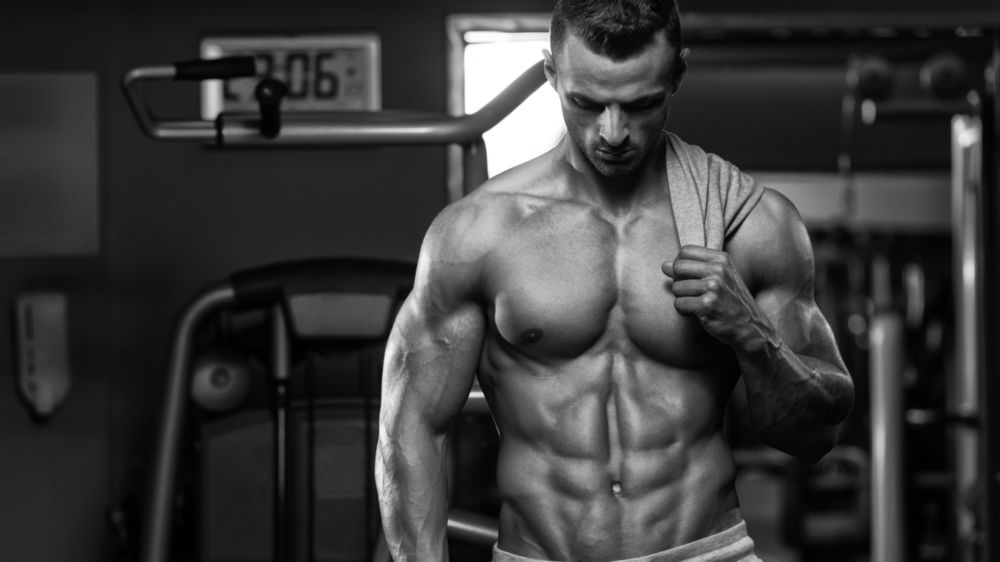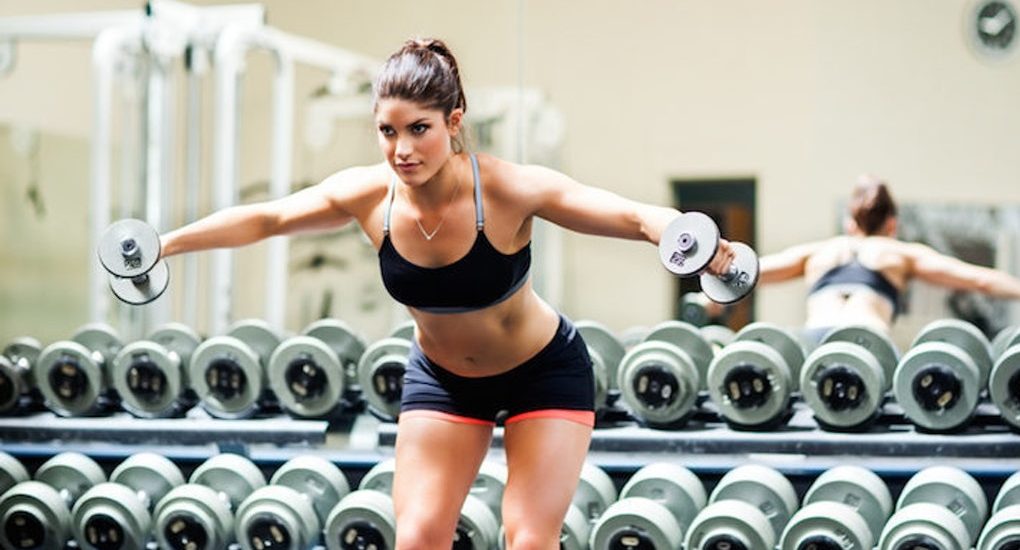If you asked a group of people “What would you like to improve on your physical appearance?” surely a good percentage would give an answer linked to slimming or weight loss.
But “losing weight” is a generic expression that people use to mean that they want to lose fat mass: even losing muscle mass causes weight loss and weight loss, but it is definitely not the goal that people normally do aim.
In fact, the problem lies in gaining weight, a term that refers exclusively to the increase in adipose mass, or those fats (lipids) that remain stored in our body, usually in very specific areas .
But beware, not everyone gains weight in the same way : in general it can be said that men tend to “put on” the belly, while women gain weight more easily in the lower part of the body, such as thighs and buttocks, often with accumulations of cellulite (we will see specifically what it is).
But the way in which fat accumulates does not depend solely on sex, but on physical conformation, which can be divided into:
- ginoid , also called “pear-shaped”, typical of the female sex. It is characterized by a distribution of adipose masses in the lower half of the abdomen, where fat is mainly present in the subcutaneous compartment;
- android , also called “apple”, typical of the male sex. It is associated with a greater distribution of adipose tissue in the abdominal, thoracic, dorsal and cervico-nuchal region, especially of the abdominal or internal type.
The two conformations are typical but not exclusive of the two sexes: they are the result of the prevalent hormonal effect , but there are also men with gynoid morphotype and women with android morphotype.
Types of fat present: an explanation
So fat is not all the same, but it does have differences depending on where it is deposited and its intrinsic characteristics, which consequently affect the ways in which it can be faced and possibly treated.
Visceral fat
We have seen how visceral fat belongs above all to the android type conformations: it is a deep fat that accumulates in the inner part of the abdomen, forming the typical bulky belly, which however it is not limp, but rather tight and round.
The fat that characterizes it is positioned around the organs that regulate metabolism (such as the liver and pancreas ), and is a rather dangerous fat precisely because it interferes with the normal metabolism of these organs.
It is the type of fat that causes obesity and overweight to be linked with a greater risk of developing diseases such as cardiovascular disease, heart attack, hypertension, diabetes and even some forms of cancer.
This is why in many guidelines and in particular in those concerning the management of obesity in adults, waist circumference is a discriminating factor between health and increased risk of disease.
To eliminate this risk factor, you should keep your waist circumference below the values of 80 cm in women and 94 cm in men: if, by measuring your waist circumference, you realize that the value you get is very close to or greater than those indicated, consult your doctor for the necessary actions and try immediately to put into practice the indications that I will provide later in the article.
Subcutaneous fat
The other type of fat, more typically female, is subcutaneous fat , present mainly in the gynoid conformation.
This is a fat that is deposited in the layers under the skin, is less connected with metabolic pathologies and we could therefore define it as much “less serious” for health.
The downside is that in any case it implies an aesthetic disorder for the person who is subject to it, precisely because it is deposited in the layers of the skin : it is difficult for it to be used for energy purposes even in the moment you are on a diet, as it is as if it were trapped in distant districts and hardly available or usable.
And cellulite? Because it worries so much
Another big concern that has always worried – above all – the female world is cellulite: also in this case we are talking about a higher incidence in women, but this does not mean that men are totally immune.
Cellulite is the highest degree of peripheral entrapment of subcutaneous fat , and it is a phenomenon that also has inflammation as an additional aspect, which makes that deposited fat even more difficult to use and to be disposed of.
The degree of inflammation can vary and determines different types of cellulite, which correspond to different levels of “severity”, ie how feasible it is to get rid of it or not.
It goes without saying that a wide range of products and treatments for cellulite reduction are available on the market; however, the effectiveness of the different options is not very clear.
In a recent systematic evaluation of scientific evidence on the efficacy of treatments for cellulite reduction , most of the studies evaluated had major methodological flaws and – little – evidence for the potential benefit was seen only for acoustic wave therapy and a minimally invasive type of laser .
It often happens that with weight loss this situation can improve, but many times this does not happen: focusing on what can be defined as an imperfection , except in serious cases, creates stress wearing in women, who find it hard to establish a harmonious relationship with their body and develop a sense of dissatisfaction and insecurity towards their body image.
Given the very few data available despite being a very widespread reality, a piece of advice I can give to live well, first of all with ourselves, is to try to understand where the boundary between the things we can change is and those we cannot , and try to cultivate a sense of acceptance for ourselves with all the defects that characterize us.
That said, there are some useful strategies at least to improve less severe cases, which coincide with treatments for subcutaneous fat (In bodybuilding, Halotest is used primarily to increase strength.https://steroide24.com/shop/orale-steroide/halotest).
How to get rid of excess fat
We have seen how fat is not only an aesthetic problem, but is included among the risk factors for numerous diseases, which could therefore be avoided or whose incidence reduced.
This is particularly true for visceral fat , the one most associated with metabolic problems, which fortunately responds very well to nutritional therapy and general physical activity.
This means that the patient who reduces caloric intake and pays particular attention to refined cereals and sugars and gets moving, generally sees a large share of visceral fat being reduced fairly quickly. .

How to eliminate cellulite and subcutaneous fat
The thing doesn’t happen as easily in women who is overweight with a prevalence of subcutaneous fat: he goes on a diet and in movement and sees that the fat loses it everywhere, for example on the face, except in the areas where he actually wants, such as the buttocks and thighs, just like the man who starts going to the gym to lose weight but struggles to put down his bacon .
In this case, a more specific intervention is needed, certainly starting with the modification of the nutritional approach, which, however, must be integrated with physical activity aimed at vascularising those areas that actually have a greater fat storage.
This basically means getting more blood, opening the vessels, creating new capillarization so that the stored fat can be used to produce energy when I go to create a calorie deficit with the diet , and results in applying frequent activation of the musculature in the affected area, which will lead to greater vascularization.
Basic tips for shedding fat
Once you have actually understood what type of fat ails you, and have identified the strategies to follow, you can try to put into practice the directions I suggest below.
To eliminate visceral fat
Less stress: Excess stress can raise levels of cortisol, a hormone with inflammatory and anti-fat burning effects; moreover, when we are stressed we also tend to overeat.
Sleep tight: Don’t underestimate the power of a good night’s sleep. The short duration of sleep was in fact significantly associated with the incidence of obesity.
Stay outdoors: total and abdominal fat is associated with lower levels of vitamin D, which can be obtained from sunlight, as well as from food and supplements.
Don’t check your belly every day in the mirror: you may not notice any difference and this could be off-putting; the best way to check your progress is to compare your physique from week to week.
Eat Balanced: Include at least half a plate of nutrient-rich vegetables in your meals, along with a source of healthy protein and whole-grain carbohydrates; avoid processed and calorie-dense but nutritionally unsatisfactory foods such as sugar, sodas and spirits, sauces and condiments.
Exercise: Burning calories through cardio exercise helps burn fat, try to be consistent and gradually increase the intensity or duration of your workouts.
To eliminate subcutaneous fat
The previous indications for decreasing visceral fat remain valid, but in addition to this it is necessary to insert a more targeted physical exercise for the areas affected by the problem, an essential factor to activate the tissue and use the fats that are deposited there.
To do this you have to work on the individual districts , so it won’t be enough to go for a walk, because it will not be a sufficiently intense exercise for those areas that I actually want to stimulate.
The specific stimulation of those areas allows the muscle to be perfused and therefore also to access the subcutaneous area, but it is important that this process is done several times a day.
Going to the gym and doing a targeted workout is a good basis, but then on the days you don’t go to the gym find some exercise to do regularly 2/3 times a day to stimulate that area specifically: for example, sets of lunges with the legs with 20-25-30 reps per leg might be fine for the thighs and glutes.
Beware of engaging in activities that create excessive amounts of lactic acid , such as high-intensity spinning: lactic acid increases inflammation and is almost counterproductive on a problem like cellulite.
As often happens, the change starts because we don’t like what we see in the mirror and we don’t feel good in our skin.
It is difficult for humans to change habits only thanks to their willpower or through a series of logical reasoning: in most cases the change begins only when the limit of tolerance of a certain situation or condition is reached.
For many, an excessive stomach or poorly toned thighs are a cause of suffering : but starting to find the necessary countermeasures to improve one’s physical condition is important because it ends up helping us in strengthening our general health.
Follow a video lesson about Timing of Nutrition , how and what to eat and how not to do further damage! It is free and can provide you with useful insights into why excess fat forms.






